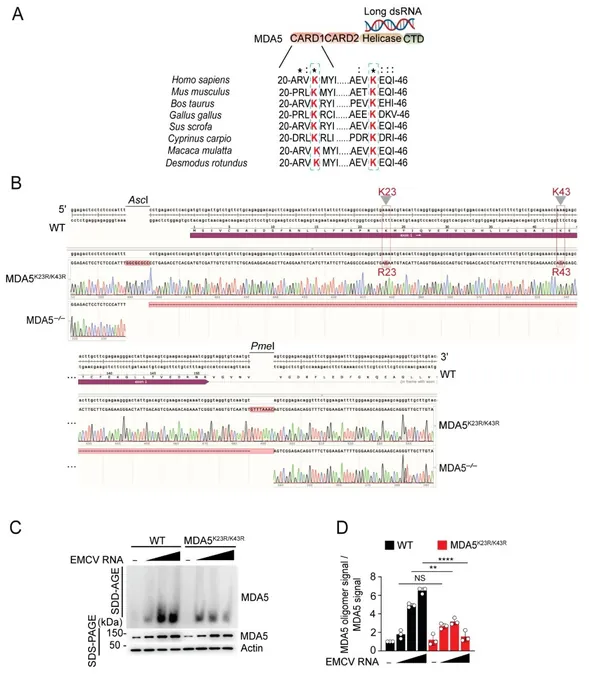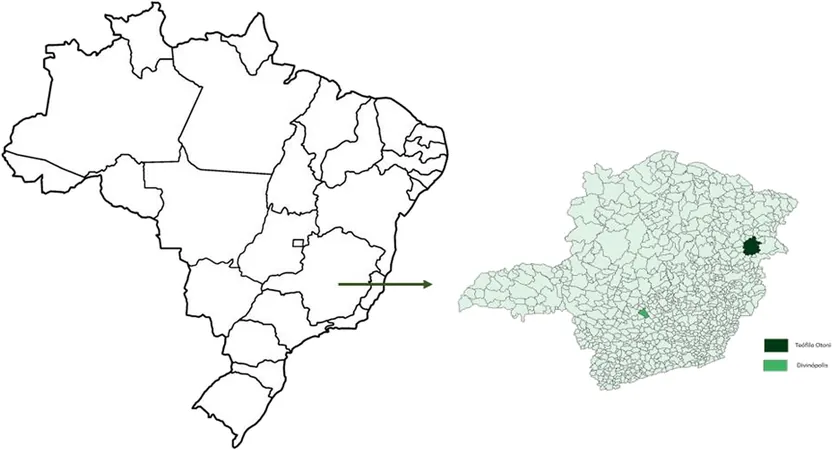
Revolutionary Discovery: Immune Protein Modification Fights Viruses and Heart Inflammation!
2025-04-10
Author: Sarah
Cleveland Clinic Unveils Breakthrough in Virus Detection
Researchers at the Cleveland Clinic have made a groundbreaking discovery about the immune protein MDA5, revealing that its specific modifications are crucial for how our bodies recognize and combat viral threats.
The Science Behind MDA5: A Key Player in Our Immune Defense
In a stunning publication in the Proceedings of the National Academy of Sciences, the team detailed how two critical modifications activate MDA5, enabling it to detect viral invaders, limit their replication, and prevent severe outcomes like heart inflammation. This work is part of an ongoing effort led by Dr. Michaela Gack, who aims to enhance our understanding of viral detection and develop potential antiviral treatments.
Understanding Protein Modifications: The Key to Viral Defense
Protein modifications occur after proteins are created, adding crucial chemical groups that prepare proteins for action or mark them for degradation. These changes allow our bodies to fine-tune immune responses, making them pivotal in fighting infections.
MDA5’s Critical Role in Virus Detection
MDA5 is integral to the initial immune response against viruses. Specific sites on MDA5 undergo modifications where a small protein called ISG15 attaches, a process known as ISGylation. Dr. Lucky Sarkar, a postdoctoral researcher in Dr. Gack's lab, explained that this modification is essential for activating our body’s innate immunity.
Groundbreaking Experiment Shows Importance of ISG15 Modification
To study the importance of ISG15 attachment, researchers created a model lacking these modification sites. The results were alarming: without ISGylation, infections from the encephalomyocarditis virus (EMCV) surged, leading to increased viral replication and severe heart inflammation.
Broad Implications for Fighting Multiple Viral Families
Previous research has shown that MDA5 detects a wide range of viruses, including coronaviruses. Dr. Gack emphasized that understanding ISGylation is vital for designing broad antiviral treatments that can adapt to various viral threats.
A New Era in Antiviral Approaches?
As current antiviral strategies mainly target specific viruses, Dr. Gack and Dr. Sarkar are exploring ways to enhance the natural immune response through protein modifications, potentially revolutionizing our approach to infectious diseases. This could be transformative, especially for new pathogens or when existing treatments fall short.
Conclusion: Hope for the Future of Antiviral Treatments!
This research not only sheds light on how our immune system operates but also paves the way for developing universal antiviral therapies. A breakthrough that could change the game in our fight against infectious diseases!




 Brasil (PT)
Brasil (PT)
 Canada (EN)
Canada (EN)
 Chile (ES)
Chile (ES)
 Česko (CS)
Česko (CS)
 대한민국 (KO)
대한민국 (KO)
 España (ES)
España (ES)
 France (FR)
France (FR)
 Hong Kong (EN)
Hong Kong (EN)
 Italia (IT)
Italia (IT)
 日本 (JA)
日本 (JA)
 Magyarország (HU)
Magyarország (HU)
 Norge (NO)
Norge (NO)
 Polska (PL)
Polska (PL)
 Schweiz (DE)
Schweiz (DE)
 Singapore (EN)
Singapore (EN)
 Sverige (SV)
Sverige (SV)
 Suomi (FI)
Suomi (FI)
 Türkiye (TR)
Türkiye (TR)
 الإمارات العربية المتحدة (AR)
الإمارات العربية المتحدة (AR)